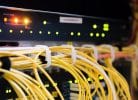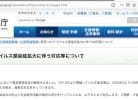Although the Japan Patent Office (JPO) generally has one of the world’s fastest patent examination rates (average in 2020: First Action within 10.2 months, total pendency from Request for Examination 15.0 months–see JPO Status Report 2022, p. 4, 47), sometimes an applicant wants to get patent rights in Japan even faster.
What Faster Examination Options Are There in Japan?
There are two main ways the JPO can give you a faster patent application examination: (1) Patent Prosecution Highway (PPH), where it reviews Allowance by certain other patent offices to speed up its own examination and (2) normal Accelerated Examination (souki shinsa 早期審査).
Technically, PPH is a form of Accelerated Examination, but the procedures and results differ so we will treat them separately and compare them. The average time for a First Office Action to be issued after the Request for Examination was 2.7 months in 2021 (JPO Status Report 2022, p. 48).
There is also a “Super Accelerated Examination” (SAE) track within the Accelerated Examination route for cases (1) either filed outside of Japan as well or by a venture enterprise and (2) whose filings are all online for the four weeks prior to the SAE request. In this case, a First Action is to be issued within 1 month from Request for SAE (JPO Status Report 2022, p. 48). If you are in a super rush, the SAE may be best, but consult with a Japanese patent attorney first.[1]
What Is Required for PPH and Standard Accelerated Examination?
We introduce here the two basic options for international applicants, PPH and regular Accelerated Examination.
|
|
|
|
| JP filing has corresponding, allowed patent application in another patent office (e.g. priority application) | JP filing has corresponding foreign application or is national phase of a PCT international patent application(+) | |
| With or after the Request for Examination; up to 3 years after the Japanese filing date or PCT international filing date, but before the JPO begins regular examination | With or after the Request for Examination | |
|
(a) Amendments to make the claims substantially match those as allowed by the corresponding patent office, (b) Documentation (with translations) of the office actions leading up to grant of the corresponding application (c) a claim correspondence chart to show the similarities |
(a) Results of a prior art search (b) Arguments supporting the subject invention over the cited references of the prior art search (c) Positive examination results from a related application are useful if available |
(+) Standard AE is available for applications filed by small enterprise, school, for green technology, etc., as well. Some other restrictions may apply, such as whether a priority application will be or has been abandoned.[3, pp. 6-9]
A PPH request is filed as a subset of request for Accelerated Examination. The main difference is whether or not a corresponding application abroad has been allowed in a country with a PPH agreement with Japan. Here is a general summary comparison of the two approaches.
What Are the Relative Pros and Cons of PPH and Accelerated Examination?
Both PPH and regular AE can be useful, depending on the circumstances. Be aware that these will be only be useful or possible if you have some positive outcomes in a corresponding foreign (e.g. USPTO, SIPO, EPO, etc.) application. An important factor to consider in the PPH route is whether or not the granted application’s claim scope would be too narrow for what the applicant wants in Japan.
|
|
|
|
|
+ Relatively simple paperwork + Cheaper route (generally smaller attorney’s fee compared to for SAE) |
+ Do not need a full grant in another country’s corresponding application + Can start accelerated examination without losing scope of claims |
|
| – Only possible if a patent has been allowed in another country – May need to narrow claims scope to match allowed patent |
– Paperwork often more complicated (need to explain advance over known prior art, etc.) – Attorney costs often higher |
Please note that there are the standard governmental fees for the Request for Examination, largely based on the claims in the application, but no additional fee for using PPH or SAE.
What if There Is No Allowance yet?
In light of the greater requirements for a Request for Accelerated Examination under this method, filing a PPH request is a more cost-effective method to accelerate examination.
If a favorable response has not yet been received in a related application but Allowance is expected, it may be better to wait for a favorable examination result and then pursue PPH. However, if you weigh the costs and want to move more quickly in Japan, of course the regular Accelerated Examination may be the only way to go. Please consult with a qualified Japanese patent attorney.
* The information provided on this website is for informational purposes only and is not intended as legal advice.
** For questions or inquiries, please contact us for more information.
Contact: Taro Yaguchi
Sources
[1] Japan Patent Office. “Outline of Super Accelerated Examination.” Updated September 24, 2021. Accessed May 5, 2022.
[2] ________. “Patent Prosecution Highway (PPH).” Updated March 31, 2022. Accessed May 5, 2022.
[3] ________. <<特許出願の早期審査・ 早期審理ガイドライン [Guidelines for Accelerated Examination and Accelerated Appeals of Patent Applications].>> PDF. https://www.jpo.go.jp/e/system/patent/shinsa/jp-soki/document/index/guideline.pdf Dated May 2021. Accessed May 5, 2022.
Header image by yuyuyaya76 from Pixabay.






